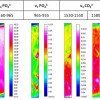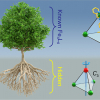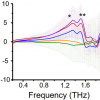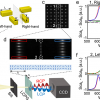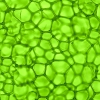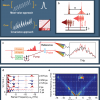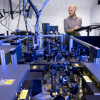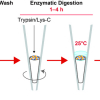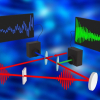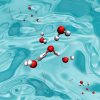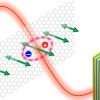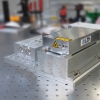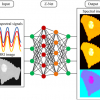Spectroscopy News
Synchrotron FT-IR microspectroscopy has been used to study the side effects of typical tooth whitening treatments, based on oxidation, compared to a new treatment developed by the authors through reduction.
Using the Hyper-CEST NMR technique, researchers have revealed two previously little researched variants of a type of transport container from the class of metal–organic polyhedra (MOPs). This could lead to a novel type of MRI contrast agent.
Terahertz circular dichroism may be able to monitor chirality of pharmaceuticals and provide new information on biomolecules’ chirality.
A new CD spectrometer can measure single nanostructures and also be used for weak signal measurements, such as polarised luminescence or Raman scatterings.
A collaborative team of researchers combined a single-cell ICP-MS with XAFS to get a detailed picture of the interaction between precious metals and Galdieria sulphuraria cells.
The authors of a new review article believe that they have found a new and better way to categorise deep-learning-based spectral imaging and review it.
New work demonstrates transient non-linear spectroscopy based on covariance methods and its advantages over mean-value-based approaches. A generalisation of this approach could be a game change in non-linear spectroscopy in the optical region.
Two-quantum multidimensional coherent spectroscopy (2Q-MDCS) quantifies precise biexciton binding energy leading to applications in future devices based on biexcitons in transition metal dichalcogenides (TMDCs).
An innovative sample preparation method for cellular proteomics and protein structural analysis improves the removal of SDS.
Newomics Inc. and Bruker Corporation have announced collaborations on a novel LC-MS platform for drug discovery in the pharma/biopharma industry as well as research institutions.
A new method for broadband THz–fingerprint Raman spectroscopy at an ultrafast spectral rate enables synchronous measurement of two distinct types of vibrational signals, for dual-region sensitivity.
PerkinElmer has announced a partnership with P1 Fuels to develop and test fully renewable fuels to be used in the upcoming series of the FIA World Rally Championship.
New machine-learning methods based on laboratory soil hyperspectral data can supply estimates of soil organic carbon with the same accuracy as lab-based methods.
An international team of researchers has developed a procedure allowing them to reproduce the double peak feature of x-ray emission spectroscopy (XES) spectra in liquid water.
Researchers have developed a novel method of coherent 2D micro-spectroscopy, which provides spectral resolution for both excitation and detection steps in combination with microscopic spatial resolution and 20 fs temporal resolution.
Scientists from the LZH have developed a laser to detect water in the polar regions of the Moon using LIBS.
Process Insights has acquired Guided Wave, which will join Process Insights’ existing broad portfolio of brands and technologies for process analytics, monitoring and control.
A new algorithm allows real-time reconstruction of images that combine optical spectral and magnetic resonance imaging data.
HORIBA Scientific has presented Dr Ahmed Abdelfattah with the annual Young Fluorescence Investigator Award at the 2022 Biophysical Society event.
NASA has opened a competition to anyone to build a model to automatically analyse mass spectrometry data collected for Mars exploration.

